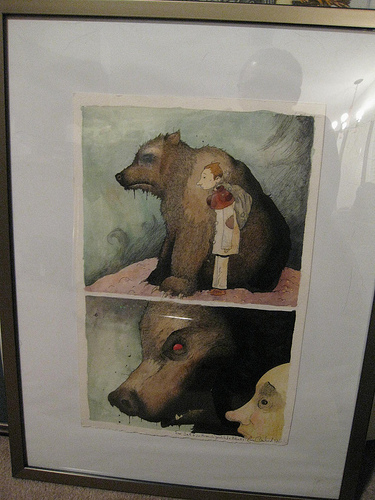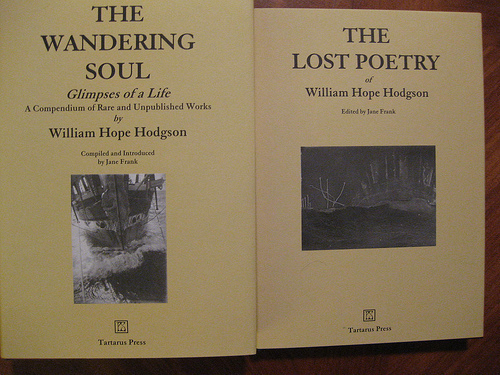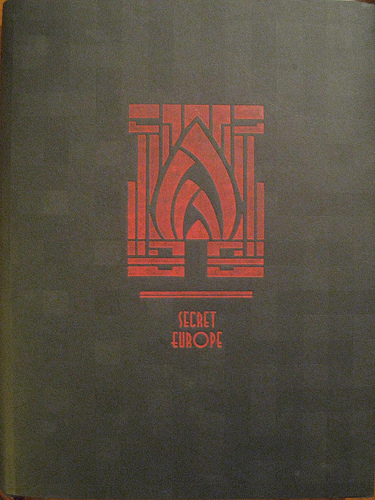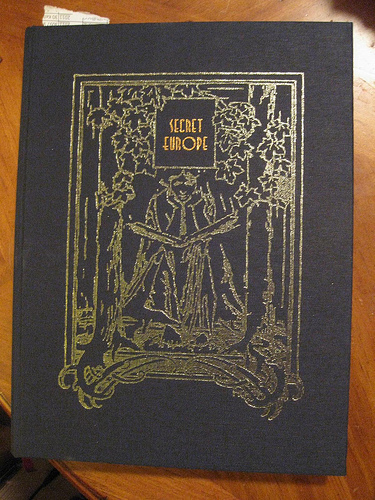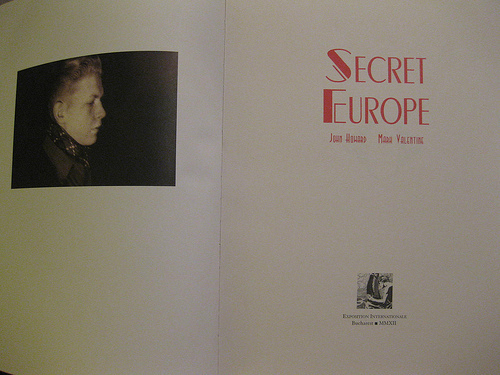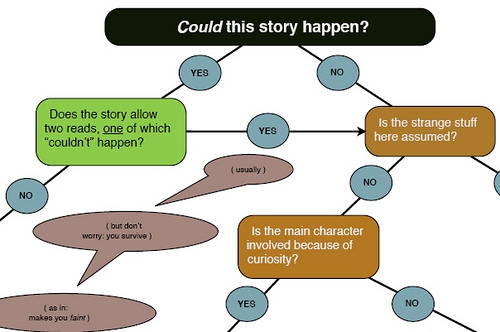Jeff VanderMeer's Blog, page 33
March 7, 2012
Treasures From Abroad: Secret Europe, Tartarus Press, Eric Orchard Art
Lots of incoming mail, but just a few gems to show off for now…
Eric Orchard is selling the original, large, hand-painted pages of the comic art he did for my story "The Situation. He was kind enough to send me this one, but you can still buy a page if you're interested, I believe.
Tartarus Press spoiled me by sending these beauts, which we'll feature on Weirdfictionreview.com soon: work by Aickman, William Hope Hodgson, and a Jason A. Wyckoff collection that looks interesting. You can buy all of these and more at their website.
Ex Occidente sent Secret Europe, an oversized limited hardcover collection by John Howard and Mark Valentine, which we'll also be featuring on Weirdfictionreview.com. You can order the book here. A couple more shots of this beautifully crafted tome…
Treasures From Abroad: Secret Europe, Tartarus Press, Eric Orchard Art originally appeared on Ecstatic Days on March 7, 2012.
Eric Basso Week at Weirdfictionreview.com
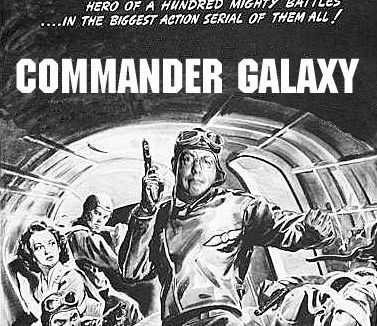
(Eric Basso in a lighter moment, and a different career…)
One of the great discoveries Ann and I made while editing The Weird compendium was the work of US author Eric Basso. His neo-Gothic, beautifully strange fiction, poetry, plays, and nonfiction are without a doubt essential reading for anyone who loves weird literature. He has had a cult following among avant-garde gothic writers since "The Beak Doctor" was first published by the Chicago Review in 1977. Since then he has published a novel, several plays, many poetry collections, and a book of nonfiction. In part, "The Beak Doctor" reads like a modern, more Joycean version of the first selection in The Weird: A Compendium of Strange and Dark Stories, Alfred Kubin's "The Other Side," in that the nameless city is plagued by a strange sleeping sickness.
So we're very happy to be hosting a week of appreciating the works of Eric Basso over at Weirdfictionreview.com. If you've never read Basso before, or read critical essays on his work, you're in for a treat.
We're running more material tomorrow and Friday, but for now here are the relevant links, with teasers…
Our managing editor, Adam Mills, provides his thoughts on Basso, and welcomes readers: His writing is marked by a quality I would label as simultaneity. Oftentimes within even the same paragraph, there are details and cues suggesting actions taking places at different levels of action, possibly even in different locations. It is left up to the reader to try and maintain the order of events while they read his writing. More often than not, typical conceptions of time and causality cannot be taken as givens.
Mills also interviews Basso: "I was a great admirer of the principles of Surrealism, the daring mind-experiments they performed on themselves, which really carries back to Rimbaud. So I began, at nineteen, to experiment on my own consciousness, particularly the process through which we pass from the conscious to the unconscious every time we fall asleep. What most would regard as an eccentricity became a discipline with me. I was able to remember and recount the bizarre and illogical journey that takes place, on a daily basis, in our heads. I learned to lie still, immediately after waking from a dream, so I could seize the memory of it before it slipped away."
An exclusive excerpt from Basso's most famous work, "The Beak Doctor": Before the mask. I must at least go through the motions for as long as the antitoxin can keep me awake. An increase from 0.5ml. of a 2,000 million per ml. vaccine, given as the first dose. My eyelids are get¬ting heavy. A little while, and yet a while longer, to follow the tick of the clock (corner-of-the-eye hallucinations: livid specks that seem to jump out of the walls before a glance decomposes them), and I will have begun to dream. A window impossible to distance. Somewhere beyond the grimy panes there was, there is, another room, high above Promontory Wall, where he used to spend his time.
Larry Nolen's 101 Weird Writers appreciation of Basso and "The Beak Doctor": As the story unfolds and the narrator wanders through a city afflicted with a strange sleeping sickness, he encounters strange sights, such as a "headless shirt with no visible legs. One bare arm reaches slowly for the glass stem. Suddenly the hand draws back, as though a spark had passed from the smoky helix through the tip of one of its fingers." There are even deeper, weirder mysteries to be encountered as he moves on through the city.
Weird fiction icon D.F. Lewis chronicles his real-time encounter with Basso's Beak Doctor: Imagine the almost endless 'sweep-shot' of the Dunkirk madness in the film 'Atonement'?–?here densely textured, bememorised, TS Eliot blended with Dickens, a cruelly fog-masked synaesthetica of a journey over variegated surfaces and amid befogged characters towards an inconclusive 'Roundhouse', a bookful journey by the I-Narrator doctor (interspersed, say, with a cat's journey (Maybury's cat?)), a stumbling rite-of-passage through a modern (post-holocaust?) world become Dickensian again as transcended by a discrete imagination that is granted you by the author as your imagination…
Part 1 of Basso's own brilliant essay "Annihilation": The human head may be taken as an ideal model for the contradictions inherent in animastic annihilation. Consider the case of a corpse newly dead and in full habit; that is, of one who has died without suffering the ravages of starvation or disease. The flesh lends itself readily to a close, pore by pore examination; its finest details gain an incredible sharpness by virtue of their immobility. Nostril hairs, commissures of tooth and gum, shallows between half-open lips where the tongue curls in the dry cavern of the mouth, these are subtleties that go far beyond even the most skillfully crafted waxworks effigy, though the skin, through the slow gravitation of blood to a lower depth, assumes the pallor of dulled candlewax. Often, as in litera¬ture, a physiognomy much troubled in life can ransom a few lost years from the brief repose preceding rigor mortis; fretlines may yield to a smooth, unaccustomed complexion as the eyes flatten under their lids, settling fast in the skull's sockets.
Matthew Pridham's excellent dissection of Basso's work, from the Beak Doctor on to several other texts: Basso's oeuvre is a challenging one, filled with odd states of consciousness and mutable, disorienting realities, as well as a referential, grimly poetic style. These pieces reward careful attention and a willingness to temporarily surrender some of one's expectations. I hope that new trends in critical theory and genre tastes will bring his work the broader readership it deserves. Those who delve into it will come away with an enhanced sense of what is possible in fiction as well as the sensation of having briefly visited a strange new, yet oddly familiar, world.
what I could feel on my eyes
blank spatulate tips of stone
cold against the heaviness of the lids
hands caked with coal slivers and dust
and no ointment to salve the horror
of the haunting ground below
And, finally, Larry Nolen's "Caught in a Moment," providing some insightful thoughts into Basso's poetry: Throughout "Villa of the Mysteries," references to "dreams" and "blindness" abound. There are references to dreams that foretell horror and doom, dreams of separation. Blindness lurks in the dark caverns, in the personified monster, in fates that are unseen by others. Both are bound together in the person of Tiresias, whose own fate figures in several Greek poems and myths. "Villa of the Mysteries" grabs attention quickly because it cuts straight to the heart of the matter: we often enter labyrinths that confuse us, upset us, and make us turn our heads away in shame and eagerness to forget what we have just encountered.
Tomorrow we're running part 2 of Basso's essay "Annihilation" and a great appreciation by John H. Stevens…
Eric Basso Week at Weirdfictionreview.com originally appeared on Ecstatic Days on March 7, 2012.
March 1, 2012
Cheeky Frawg Books Receives FILI Translation Grants for Books by Leena Krohn and Jyrki Vainonen
I mentioned this in passing awhile back, but I want to devote a more formal post to the news…
In January, our Cheeky Frawg books was awarded two substantial translation grants from FILI, the Finnish Literature Exchange, funded by the Finnish Ministry of Education. One grant will allow us to translate a collection by Jyrki Vainonen to be entitled The Explorer & Other Stories and the other will make possible a translation of the iconic Leena Krohn's novel Datura. We'll have a schedule for publication in a few weeks. The translators for both books will be the husband-and-wife team of Juha Tupasela and Anna Volmari. We are extremely pleased that FILI approved our grant applications and cannot wait to bring these two books to an English-speaking audience.
In addition, Jukka Halme and Tero Ykspetäjä are still editing a Finnish fantasy sampler for us, and we hope to have more announcements about Finnish translation efforts in the coming months. We believe we will be bringing out an ebook of Krohn's Tainaron, for example.
In news from the same general area of the world, Cheeky Frawg will release Swedish writer Karin Tidbeck's first story collection in English (self-translated) in October. Tidbeck is an amazing writer and has her first novel coming out from Sweden's largest publisher in September—a writer to watch.
We also will be running an article on Finnish Weird and an excerpt from a novel by Johanna Sinisalo on Weirdfictionreview.com.
Tero posted awhile back on this blog about the differences between English and Finnish, and the more we delve into Finnish literature in translation, the more I wish I could read in Finnish (vain hope). If you missed Tero's post the first time, check it out in the archives of this blog. Here's a short excerpt.
Finnish is more equal. We don't have gender-specific personal pronouns, there's just "hän" meaning both "he" and "she". This is sometimes a problem for translators, but otherwise pretty neat. It also means we don't have a language-related problem with people who don't identify either as a he or a she…
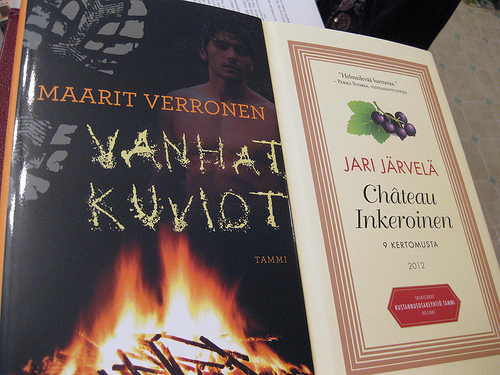
(Thanks to the Elina Ahlback Literary Agency for sending these books by Maarit Verronen and Jari Järvelä, received today.)
Cheeky Frawg Books Receives FILI Translation Grants for Books by Leena Krohn and Jyrki Vainonen originally appeared on Ecstatic Days on March 1, 2012.
February 29, 2012
Thirty Years of the Mississippi Review
This 850-page rock thumped down on the doorstep yesterday with an emphatic "you'd best take me seriously" look in its eye.
Thirty years of the Mississippi Review, including fiction and poetry by Margaret Atwood, Joyce Carol Oates, Samuel R. Delany, John Barth, Rick Bass, Robert Olen Butler, Raymond Carver, Rita Dove, Miranda July, Ben Marcus, Rick Moody, Wells Tower, and, well, about 200 other contributors, it looks like.
All taken from Frederick Barthelme's long reign as the editor. I kinda think you can't miss this one.
Thirty Years of the Mississippi Review originally appeared on Ecstatic Days on February 29, 2012.




February 28, 2012
Support a Worthy Cause: The SF/Fantasy Translation Awards
Cheryl Morgan notes that her fund drive for the Science Fiction & Fantasy Translation Awards is entering its last day or so. You can easily donate by clicking the paypal button on this post. We've contributed some cool stuff to the cause, but there's a ton of great material. Help them reach their goal!
Support a Worthy Cause: The SF/Fantasy Translation Awards originally appeared on Ecstatic Days on February 28, 2012.




Panic Attack: Understanding Your Work Cycles
Sometime in the past month or so I must admit that I had a kind of panic attack, one that had me stressed and depressed at first—especially in the context of so many writers producing a novel a year. Although I've never thought this was necessarily a good idea for me, except career-wise, it still exerts a kind of pressure if you start thinking about it too much.
My panic attack occurred while I was looking through a copy of my last novel, Finch, which came out in 2009 in the US and 2010 in the UK. I suddenly realized that I was still months away from completing my next novel. How could I have let that happen? What in the heck had I been doing the last few years?
The answers was that I'd done a lot of anthologies, like The Weird, which is after all like producing about seven anthos in terms of word length. Not to mention the nonfiction book The Steampunk Bible. Between The Weird, The Steampunk Bible, and our Lambshead Cabinet anthology, I along with Ann (and on the Bible, SJ Chambers) had dealt with over 800 creators, which is in itself a kind of crazy time-suck. Getting our ebook imprint Cheeky Frawg off the ground had taken more time, as had creating Weirdfictionreview.com and doing a lot of work for the Shared Worlds teen writing camp (a recurring, annual time commitment).
So, I told myself, with some sense of relief if not a bit of sadness at perhaps losing sight of my priorities, I had a great excuse. All of these other projects had taken up my time. That was the simplest explanation. It's not healthy to beat yourself up for not being able to do everything simultaneously.
But then I took stock again after looking at what I did have in the works fiction-wise—and a different picture started to emerge. There had been a lot of time spent on a long film treatment entitled Jonathan Lambshead and the Golden Sphere that had taken a whole summer (and may still bear fruit). More time had been spent on conceptualizing a space opera trilogy, another project for the future. More importantly, I realized I had written about two-thirds of a novel entitled Borne, about three-fourths of a novel entitled The Journals of Doctor Mormeck (serialized on this blog), and another twenty-thousand words of another novel which we'll just call Mainstream Novel #1 for now.
Seeing the amount of fiction I'd actually produced, even if most of it wasn't finished, made me look back at the previous "cycle" of novels: Veniss Underground, City of Saints and Madmen, Shriek, and Finch. I realized that there had been significant overlap between those books, in terms of partial rough drafts. Veniss had lain dormant with about half of it done while I worked on much of City of Saints and Madmen (the first of my Ambergris novels), then come to life again. Shriek had been conceived of while writing the last parts of City of Saints—I had a 12-page summary of sorts—and a very early section of what became Finch was sparked by the original illuminated manuscript cover of City of Saints. I had about seven thousand words of proto-Finch well before finishing the extended City of Saints. While working on Shriek, additional ideas for Finch accrued over a period of years. Shriek itself took several years of work, although no one noticed the gap because Veniss was published after City of Saints.
Even though Veniss stands alone, it partakes of the same aesthetic as the beginning of the Ambergris Cycle. The two books speak to one another in some ways, and then Shriek and Finch, although written in different styles, are pursuing and following up on themes and issues first brought up in City of Saints. Thus, coming to the end of Finch was like coming to the end of the first part of my career.
People think I'm prolific, but part of that is simply that I initially had so much trouble finding publishers for my work and thus I had a back-log. So I think I'm only just beginning to see the complete outline of my long-term work cycle, obscured in part by the pattern of publication, not creation, of my prior novels. It may seem odd to not have recognized this, considering I'm 43 and been writing for three decades, but sometimes you need to take a step back to really see everything clearly.
Now I feel that I'm at the beginning of another cycle, one that's more various despite certain connections between Borne and The Journals of Doctor Mormeck. And to some extent the process is similar: stops and starts on the novels prior to publication, overlap in writing parts of each of them, and a slow inching toward completion. At this point, I'm not entirely sure which novel will be finished first, because I'm equally passionate about each of them. What I do know is that they will be finished, especially because in each case I have a good idea of the overall structure and an image in my mind that corresponds to a rough understanding of the ending of each novel.
I've come to recognize that it's important for me to realize that after living in Ambergris for so long it was natural that there be a break before the next book—and to give myself a break about that. It's even more important to realize I've actually made significant process over the past couple of years—enough so that if I had just been working on one novel, it would have been completed and turned in. Understanding that this is part of my process, remembering that I've worked on multiple books in the past, is now helping me relax into this next phase of finishing the novels. I just have to be patient and ignore the idea of turning in a novel a year. Right now, apparently, I'm working simultaneously on the novels that I'll have published over the next few years.
Still, I have to say that the part of me that requires instant gratification is thankful for finally returning to short fiction. It was a weird feeling to realize that a story I finished last month, "No Breather in the World But Thee," was only the third story of any kind I had finished since Finch, the others being "The Quickening" in my collection The Third Bear and a story for a Vance tribute antho. (Not including, of course, meta-fiction for Steampunk Reloaded and the Lambshead Cabinet and something set in the Halo universe).
Now I'm working on another story entitled "The Last Redoubt" and a long novella entitled "Annihilation" and I'm excited about completing both. But I'm no longer stressed about the situation with the novels. I know I'll finish them eventually and I'm confident that my organic approach to them is the right one. The fact is, your career has to follow and fit your fiction and the rhythms and cycles of that fiction—the needs of a career can't dictate those things. Not if you want to remain sane and retain whatever makes you unique as a writer.
Panic Attack: Understanding Your Work Cycles originally appeared on Ecstatic Days on February 28, 2012.
February 27, 2012
Weirdfictionreview.com Features Kali Wallace's Short Story The Liberators

This week on Weirdfictionreview.com, I want to direct your attention to Adam Mills' editorial about taking over as managing editor, Ann VanderMeer on Weird Tales, a great interview with Steve Duffy, and "The Liberators" by Kali Wallace, a new story from a rising star.
A trace of road skirted the dead city, the same road the platoon had followed months ago on the last days of their desert march. Bloody blisters had made every step agony, and the soldiers had passed nervous nights beneath the city's walls and windows as aimless wind moaned through its streets. And during the day the sun, the blinding, inescapable sun had quivered from dawn to dusk, throbbing in Francisco's eyes, peeling the skin from his neck and melding the scaled armor to his body like a carapace. When they rested, stinking of sweat and blood, the soldiers shared stories of what they might find in the city. Alien riches and encampments, enslaved colonists and mountains of human bones, every possibility more outlandish than the last.
Wallace was part of the Clarion San Diego 2010 class, during which Ann and I were lucky enough to be the instructors for the last two weeks. She has already had short fiction appear in The Magazine of Fantasy & Science Fiction with a story workshopped at Clarion, the stunning "Botanical Exercises for Curious Girls," and you can read an interview with her about that story at F&SF's website.
In the comments on that interview writer Carolyn Ives Gilman rightly notes that "This was an awesome story. Creepy, yes, but really original. I'd never read anything like it, and that's getting harder and harder to say. I want more." We really love her fiction—it's sharp, unique, always has depth, and it consistently surprises. She also has stories forthcoming this year in Lightspeed and Asimov's SF Magazine, and made a cameo with a short entry in our Lambshead Cabinet of Curiosities antho.
The 2010 Clarion class was incredibly talented, and as far as we're concerned any or all of them could go on to have major careers— already readers are discovering writers from that class like Karin Tidbeck (Weird Tales, Unstuck), John Chu (The Boston Review), Tom Underberg (Weird Tales), Jennifer Hsyu ( Marion Zimmer Bradley's Sword & Sorceress XXVI), Gregory Bossert (already published in Asimov's before Clarion), and Tamsyn Muir (Fantasy Magazine and Weird Tales), to name just a very few.
We really count it a blessing to have encountered their work at Clarion and thus to be on the look out for all of the great writing they're doing. I'll be blogging about more writers from this class as the year progresses, I'm sure.
Weirdfictionreview.com Features Kali Wallace's Short Story The Liberators originally appeared on Ecstatic Days on February 27, 2012.
February 26, 2012
Staying in Touch with Your Writing
Sometimes I think writers, on their blogs and when giving advice, over-emphasize word count. It's certainly important for writers to understand that discipline is important and that no work exists without getting butt in seat and words on the page. But there's a wider context to writing that sometimes gets lost.
That context? Thinking about writing is vital, and staying in touch with your characters and story can be as important as the actual writing. Words on the page created without finding the time to exist fully in the world of the story often means a writer misses possibilities that would deepen a work of fiction. I don't like hard-and-fast rules, but if I had to lay one down, it would be to set aside the time to live with your fiction, not just write it. Sometimes a compulsion to not sit in front of the computer and type isn't laziness—it's the subconscious saying you've missed something, that you haven't gone far enough, that you haven't made all the connections you need to make. So to some extent the continuous living within the fictive dream of the narrative is more important than a continuous physical act of writing.
Every writer is different in how s/he approaches the act of creation, and that has to be kept in mind at all times, including while reading this post. But for me, it tends to take the form of a kind of circling and layering. I will write for three straight days and then take a day or two off. But I'm not really taking those days off. I'm writing down ideas and fragments as they occur to me and I'm continually re-living the scenes I have down on paper and imbuing them with additional life and nuance. On those "off" days, I'm staying in touch with the material, and the material often changes in surprising ways as a result. Without this slowing of the process, without this "work-avoidance," the stories suffer, and I find myself with much more revision on the back-end—and sometimes the sense that what I've accomplished at the end is more of a "patch" than an organic edit.
These notes and fragments also develop a life of their own. They start as scribbling on torn pieces of paper and then I type them up into a Notes document, and in typing them up much of it gets fleshed out and I suddenly have little mini-scenes and additional impulses or connections created with the actual partial draft document. And in finding where these mini-scenes and snippets fit, the partial draft changes once again.
This thinking about the fiction is especially important given the Age of Fragmentation we live in. It's extremely important to do this thinking away from the internet and away from mobile devices. Distractions of this kind—multi-tasking distractions—tend to dull our ability to really think deeply about what we're working on. And then, our brains lacerated by so many other voices, through social media, blogs, etc., we turn to the actual writing without having had the time to live in the fictive dream ahead of time.
The imagination is a muscle, and like any muscle, you get out what you put in. If you neglect a muscle in your work-out or you only intermittently pay attention to it, it begins to lose mass; it begins to atrophy.
I also think that thinking about writing is a form of meditation: it's restorative to peace of mind. It's one of the most enjoyable parts of writing—the sense of excitement as connections form you didn't know existed, as characters take on texture and depth you hadn't suspected. As you push it further and farther than you would have otherwise.
It's in this context that word count matters: with the proper undivided attention having been devoted to the writing beforehand.
Staying in Touch with Your Writing originally appeared on Ecstatic Days on February 26, 2012.
February 25, 2012
Weird Tales: Ann VanderMeer's Last Issue and Her Future Role
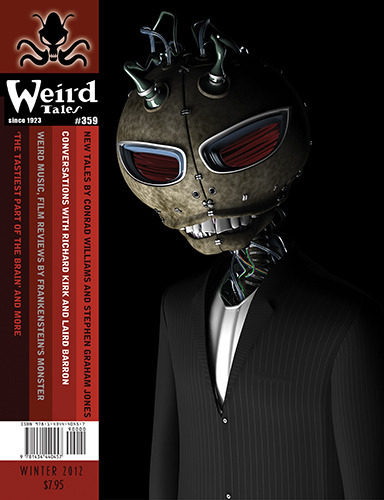
At the Weird Tales blog, you can find an update that includes information on the forthcoming release of the last issue with my wife, Ann VanderMeer, serving as editor-in-chief. That issue has an incredible line-up, including Stephen Graham Jones, Joel Lane, Emily Jiang, and Conrad Williams. It also includes a first English-language story by Finnish writer Leena Likitalo, a near-first story sale by the talented Tom Underberg, and a story by Tamsyn Muir, "The Magician's Apprentice."
"The Magician's Apprentice" by Tamsyn Muir isn't a first sale—I think it's a second or third—but it is one of the finest stories by a new talent I have read in recent memory. It is deadly, uncompromising, and perfectly written. In fact, it's the kind of story that makes me think that Muir is a rising star in that wonderfully ambiguous area occupied by writers like Kelly Link, Shelley Jackson, Kevin Brockmeier, Karen Russell, and Steven Millhauser. On the basis of having read other of her work at Clarion in 2010, I'd bank on it.
As for the changes at Weird Tales, as the WT blog notes Ann has decided to accept the new management's offer to stay on as a "senior contributing editor". In this role, she will be selecting one story by an up-and-coming writer for each issue of the magazine, for a special section. I know Ann in part accepted this offer because of her commitment to publishing new talent. This has been a consistent part of her philosophy throughout her years of editing. The new administration also will be consulting with her from time to time, although she will not be responsible for any other element of the content in the print magazine. The status of web-only fiction and the One-Minute Weird Tales is still being determined, and Ann may also have a role to play in those departments.
In addition, I'd like to point out that the cover for Ann's final issue, pictured here, features a look-and-feel that former WT creative director Stephen H. Segal came up with and that Ann heartily endorsed. These changes are enhancements Ann had wanted to enact for quite some time—including the more sinister/horrific approach to cover art and a more traditional approach to the title treatment. In her last issue, then, with certain constraints gone, you can in essence see more clearly the direction Ann was beginning to chart for Weird Tales magazine.
Weird Tales Magazine's John Harlacher has expressed an interest in cross-promotion of WT with Weirdfictionreview.com and our ODD? anthology, and inasmuch as this makes sense, and is of general use, we will do so.
Weird Tales: Ann VanderMeer's Last Issue and Her Future Role originally appeared on Ecstatic Days on February 25, 2012.




February 23, 2012
Reading the Weird: John H. Stevens with Eight Weird Thoughts
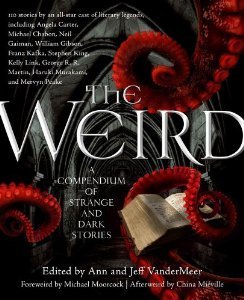
John H. Stevens has a wonderful contemplative piece on reading our THE WEIRD compendium up on SF Signal. Here's a brief excerpt:
Understanding is not knowledge, but revelation: What's the difference? Knowledge is "the name of that thing is Ook." Revelation is "there are creatures like Ook in the world!" Weird fiction is about the recognition of what I discuss in #2 above. It is about coming into contact with things that are difficult, contentious, or impossible to know. It about prophecy, divulgence, consequence, afflatus. It is coming to terms with powerlessness, lack of vision, the cosmic smallness of humanity. It is learning the true costs of living, feeling it deep inside you, as in Ryunosuke Akutagawa's "The Hell Screen." It is what eats us from the inside out and impels us inevitably towards death, even as we struggle to come to terms with life.
Also, Stephen Graham Jones is teaching a class using THE WEIRD, and he's had his students do flow charts about the reading experience. Here's a teaser of Jones' own flow chart. We hope to feature some of these at Weird Fiction Review later on.
You can buy THE WEIRD here in ebook form, with the US print edition out in May.
Reading the Weird: John H. Stevens with Eight Weird Thoughts originally appeared on Ecstatic Days on February 23, 2012.





